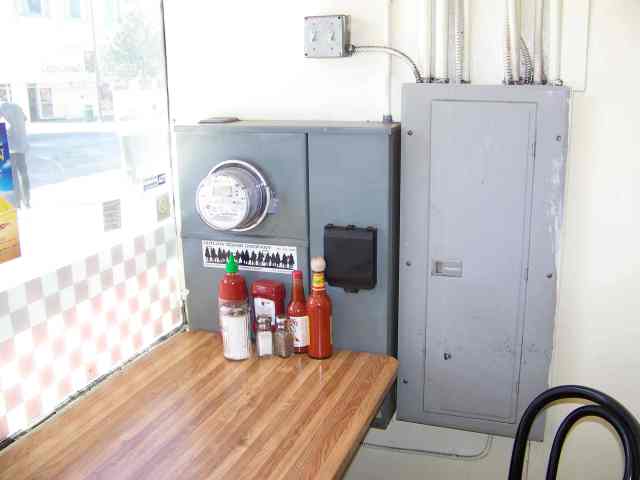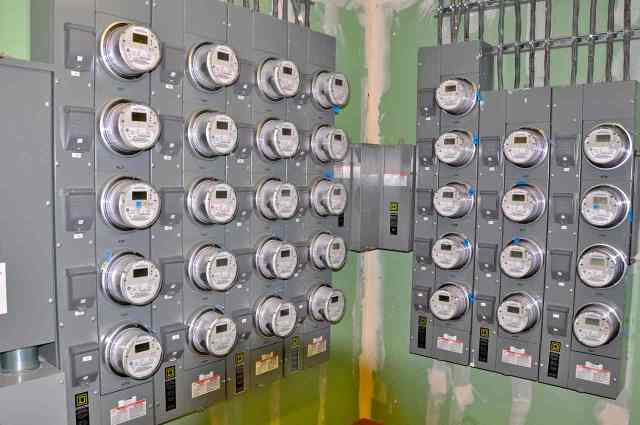Energy companies often cite the California Council on Science and Technology (CCST) report on Smart Meters as proof of Smart Meter safety.
What is the CCST Report?
In July 2010, California Assemblyman (now Congressman) Jared Huffman, joined by Assemblyman Bill Monning, asked the CCST to review Smart Meter safety. The CCST is a politically-appointed advisory panel for the state of California, representing aerospace, industry, university, government, and technology interests. It is not impartial or independent.
An independent, science-based study by the California Council on Science and Technology would help policy makers and the general public resolve the debate over whether SmartMeters present a significant risk of adverse health effects. Toward that end, I request that the Council specifically determine whether FCC standards for SmartMeters are sufficiently protective of public health taking into account current exposure levels to radiofrequency and electromagnetic fields, and further to assess whether additional technology specific standards are needed for SmartMeters and other devises that are commonly found in and around homes, to ensure adequate protection from adverse health effects.
Assemblyman Jared Huffman — Letter to CCST, July 30, 2010
Huffman believes it’s time to put the issue to independent scientists. “It is in everyone’s interest to bring credible, independent science to this question,” Huffman said. “If the FCC standards are deemed adequate, then the SmartMeter program can move forward with greater public confidence in the safety of the devices. If the standards are inadequate, we need to know that so that we can get to work on better standards.”
Assemblyman Jared Huffman — Press release, 8-6-10
The final report was released in March 2011.
https://ccst(dot)us/reports/health-impacts-of-radio-frequency-from-smart-meters-project/
CCST conclusions: FCC guidelines are protective for thermal impacts from Smart Meters; non-thermal impacts are unknown. It made recommendations that were ignored (see below).
The CCST panel did not conduct any research. It relied on government agencies and the energy industry for much of its analysis, data, and recommendations. The report based its conclusions on so-called “consensus” science. It is astoundingly unscientific; despite its claims of being scientifically rigorous, it committed serious and basic statistical errors. And though the WHO IARC declared RF to be a Class 2b carcinogen in May 2011, there has been no call by the CCST to change its conclusions.
The report states:
Non‐thermal effects, however, including cumulative or prolonged exposure to lower levels of RF emissions, are not well understood. Some studies have suggested non‐thermal effects may include fatigue, headache, irritability, or even cancer. But these findings have not been scientifically established, and the mechanisms that might lead to non‐thermal effects remain uncertain. – p. 9
There currently is no conclusive scientific evidence pointing to a non-‐thermal cause-‐and- ‐effect between human exposure to RF emissions and negative health impacts. For this reason, regulators and policy makers may be prudent to call for more research while continuing to base acceptable human RF exposure limits on currently proven scientific and engineering findings on known thermal effects, rather than on general concerns or speculation about possible unknown and as yet unproven non-‐thermal effects. Such questions will likely take considerable time to resolve. The data that are available strongly suggest that if there are non-‐thermal effects of RF absorption on human health, such effects are not so profound as to be easily discernable. – p. 18
The report was criticized by:
- California Department of Public Health, which actually did EMF research in the past,
- Dr. Raymond Neutra (Director Emeritus, Occupational and Environmental Health Unit, California Department of Public Health — the CDPH unit that conducted EMF research),
- Dr. De-Kun Li (Senior Research Scientist, Kaiser Permanente),
- Dr. Karl Maret (electrical engineer and medical doctor) who reviewed the research in his critique,
- Dr. David Carpenter (Director of the Institute for Health and the Environment, University of Albany, New York),
- Daniel Hirsch (nuclear policy expert; UCSC lecturer; President, Committee to Bridge the Gap),
and other scientists and health care professionals. Links are below.
A prominent chart in the CCST report has serious errors which undermine CCST conclusions. This chart is often used by utility companies in Smart Meter marketing materials[i]. The CCST panel used different units of measurement when comparing Smart Meter radiation exposure to that of wireless devices, such as cell phones. These fundamental errors reveal the lack of statistical knowledge and lack of scientific background of the panel members.
When Daniel Hirsch corrected these basic statistical errors in his comments (and Hirsch does not claim his answers are definitive but merely estimates), it revealed the following figures (with charts):
- exposure from one Smart Meter is far greater than exposure to wireless devices, such as cell phones.
- at 10 feet from a Smart Meter, a person receives 5 – 16 times the whole body radiation exposure from a cell phone held to the head
- at 3 feet from a Smart Meter, a person receives 53 – 160 times the whole body radiation exposure from a cell phone held to the head
- using the inverse square calculation, at 1 foot, one Smart Meter exposes people to 450 – 1400 times the whole body radiation exposure of a cell phone held to the head. (Figure 3 and 4)
http://eon3emfblog.net/wp-content/uploads/2011/02/110212_GBG-on-Smart-Meters.pdf
Many children and adults sleep against walls where Smart Meters are mounted. Many apartments and condominiums have groups of meters installed on the walls of living units or facing public areas. In some areas, Smart Meters are installed inside homes and businesses.
Smart Meter installers were never warned about the hazard of being in close proximity while installing hundreds of Smart Meters, including in situations such as this.
Recommendations in CCST report included:
- Consumers should be provided with clearly understood information about the radiofrequency emissions of all devices that emit RF including smart meters. Such information should include intensity of output, duration and frequency of output, and, in the cases of the smart meter, pattern of sending and receiving transmissions to and from all sources.
- The California Public Utilities Commission should consider doing an independent review of the deployment of smart meters to determine if they are installed and operating consistent with the information provided to the consumer.
Unfortunately, these were ignored. California bill AB 37 by Assemblymember Huffman would have required utilities to disclose RF information to the public, but he withdrew the bill.
Links to expert critiques:
http://www.ccst(dot)us/projects/smart2/documents/letter3.pdf
California Department of Public Health
http://sagereports.com/smart-meter-rf/?page_id=282
Karl Maret, David Carpenter, Magda Havas, Olle Johansson, Raymond Neutra, others
http://eon3emfblog.net/wp-content/uploads/2011/02/110212_GBG-on-Smart-Meters.pdf
Daniel Hirsch
http://eon3emfblog.net/?p=1515
Susan Foster (Medical Social Worker)
Comments
De-Kun Li (Senior Research Scientist, Kaiser Permanente Northern California) with contact information and research background included
[i] For example, ComEd (Illinois)
http://www.comed(dot)com/Documents/newsroom/Grid_Mod_Fact_Sheet_RF_2013.pdf
Share this:
Like this:
https://smartmeterharm.org/2023/11/27/ccst-report-criticized-by-public-health-experts-and-scientists/
Spread the word:
- Click to share on Facebook (Opens in new window)
- Click to share on Twitter (Opens in new window)
- Click to share on WhatsApp (Opens in new window)
- Click to share on LinkedIn (Opens in new window)
- Click to share on Pinterest (Opens in new window)
- Click to share on Reddit (Opens in new window)
- Click to share on Tumblr (Opens in new window)
- Click to share on Telegram (Opens in new window)
- Click to print (Opens in new window)

